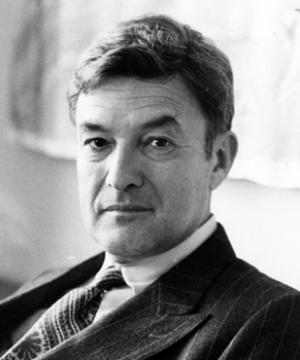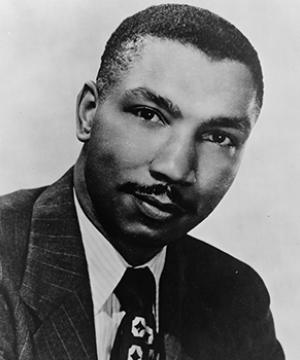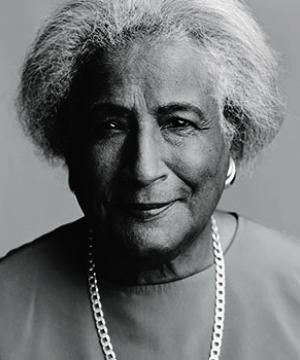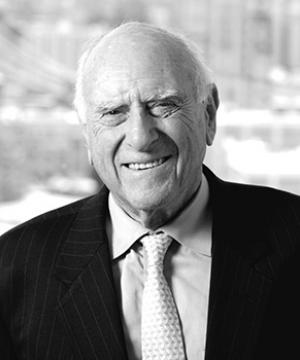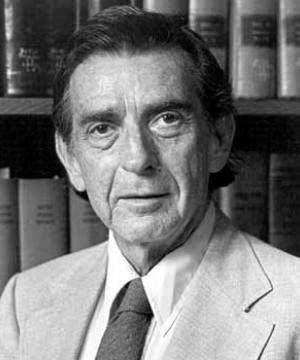Columbians Who Played a Role in Brown v. Board of Education
Alumni helped shape the landmark Supreme Court ruling.
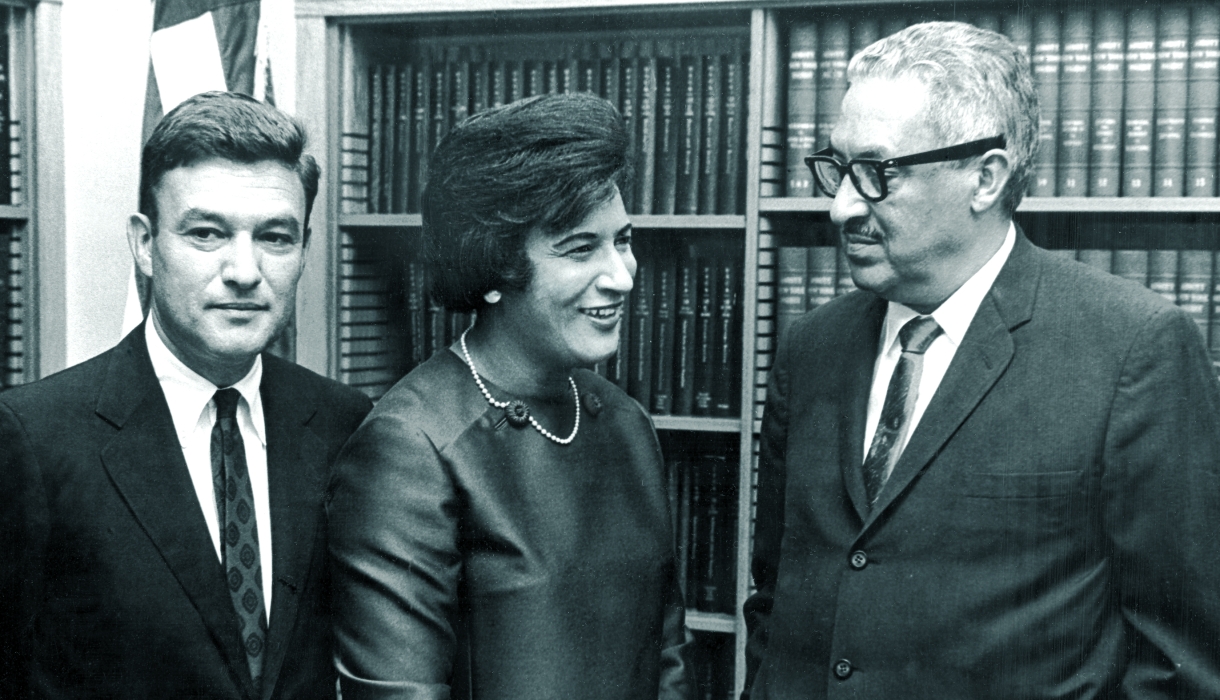
Pictured above: Jack Greenberg ’48 and Hon. Constance Baker Motley ’46 with Thurgood Marshall
This story was originally published in March 2016 and has since been lightly updated.
Jack Greenberg ’48
During his second semester at the Law School, Professor Jack Greenberg spotted an announcement describing a seminar called Legal Survey, to be taught by Professor Walter Gellhorn ’31. There was something more than the half-point credit and satisfaction of a writing requirement that attracted Prof. Greenberg’s eye: The course allowed students to work for civil liberties and civil rights organizations—gathering facts and writing memoranda, complaints, and briefs. Prof. Greenberg ran up the two flights of stairs to Prof. Gellhorn’s office and signed on.
Prof. Greenberg took the course for four semesters. He and other students worked on cases and projects for the American Civil Liberties Union, the American Jewish Congress, the NAACP, and other groups. Prof. Greenberg soon showed a gift and a passion for civil rights. In one case, he wrote a memorandum for the Japanese-American Citizens League that argued that Japanese-American relocation-camp prisoners who had renounced their American citizenship had been coerced into doing so by their imprisonment.
In the course of his work, Prof. Greenberg visited the offices of the LDF, where he met Thurgood Marshall and involved himself in LDF projects. A year after graduation, he received a note from Prof. Gellhorn, alerting him that a position on the legal staff had opened up at the LDF. Prof. Greenberg jumped at the opportunity and played a significant role in the School Segregation cases, including litigating Brown v. Board of Education. He ended up staying with the organization for 35 years, becoming its director in 1961. Prof. Greenberg led LDF through the heady years of the 1960s civil rights movement, tripling the organization’s caseload and guiding more cases before the U.S. Supreme Court than any entity other than the U.S. government itself, addressing a variety of political and economic issues.
He returned to Columbia University in 1984, serving as dean of Columbia College until 1989, when he joined the Law School faculty. He continues to teach and write on the topics of civil rights and human rights. [Editor’s note: Greenberg died in October 2016. He was 91.]
Hon. Robert Carter ’41 LL.M.
Robert Carter was just a year old in 1918 when his father died, leaving his mother with eight children to support. She went to work as a domestic and supported the educational aspirations of her youngest child, Robert. By the fall of 1937, he had entered Howard University Law School. During his second semester, he visited the marble palace across from the Capitol Building for the first time to hear a former Howard Law School dean argue and win the first of the NAACP school cases to reach the Supreme Court, Missouri ex. Rel Gaines v. Canada.
Judge Carter received an LL.M. from Columbia University before being drafted into the Army. After his discharge from the Army Air Force in 1944, Thurgood Marshall offered him a job with the NAACP legal staff; he enthusiastically accepted.
Working as Mr. Marshall’s chief strategist, Judge Carter devised legal strategy and supervised the preparation and filing of briefs for the NAACP’s attack on Jim Crow during the postwar years. Brown, a shift from a focus on procuring equal facilities and resources to an all-out assault on enforced racial segregation, was a dive into uncharted legal waters, and demanded a
novel approach.
As lead counsel in Brown v. Board of Education, Judge Carter turned to contemporary social science and unearthed psychological and sociological studies demonstrating the injurious effects of segregation. He believed this was the key to successfully challenging Plessy v. Ferguson’s “separate but equal” ruling. Judge Carter recruited a young sociologist, Kenneth Clark, among other experts, to aid the legal team in pursuing this approach, and it became the underpinning of the court's opinion that “separate educational facilities are inherently unequal.”
Following his departure from the NAACP in 1968, Judge Carter became a partner in private practice until 1972, when President Richard Nixon appointed him to the federal bench. He continues to serve as a federal district judge for the Southern District of New York. [Editor’s note: Judge Carter died in January 2012. He was 94.]
Hon. Constance Baker Motley ’46, Hon. Jack Weinstein ’48, and Prof. Charles Black
While still in her teens, Constance Baker Motley had aspirations of becoming an interior decorator. That changed after she was denied admission to a New Haven, Conn., skating rink and public beach. Judge Motley signed up for membership in her chapter of the NAACP and set her sights on a career in the law. While studying law at Columbia, she met Thurgood Marshall, who offered her a job. She soon became a full-time member of the LDF legal staff.
Judge Motley played an important role on the Brown case. After the case was scheduled for re-argument, she researched questions involving the power of Congress to outlaw segregated schools, which was one facet of the case the justices wanted to focus on during re-argument. She also helped draft the briefs for the case, along with Jack Weinstein, a member of the Columbia faculty who was teaching civil procedure and evidence. In 1967, Senator Robert Kennedy recommended him for a federal judgeship. He has been serving as a judge in the Eastern District of New York ever since, handling major cases involving Agent Orange, asbestos, and school desegregation. [Editor’s note: Weinstein died in June 2021. He was 99.]
Another member of the Columbia faculty involved in the case was Professor Charles L. Black. A southern Texan, he had limited encounters with Black people until, at the age of 16, he heard Louis Armstrong play his horn. He later remarked that it was impossible to overstate the significance of seeing “genius” for the first time in an African American. Inspired, Prof. Black played his part on the Brown case, outlining model pleadings, developing strategy, and leaving his distinctive stamp on reply briefs.
Judge Motley was eventually drawn into the world of politics and the judiciary. She served in the New York State Senate and was the first woman borough president in New York. In 1966, President Lyndon Johnson appointed her as a U.S. district judge for the Southern District of New York, the first black woman to be appointed to a federal judgeship. She was made chief judge in 1982 and a senior judge four years later.
